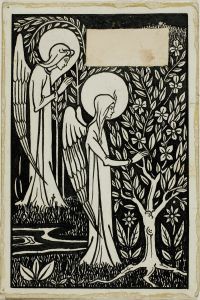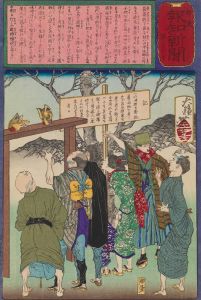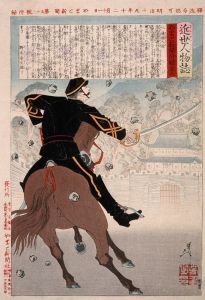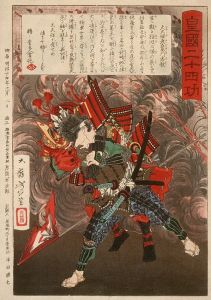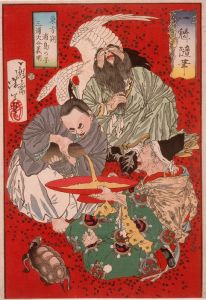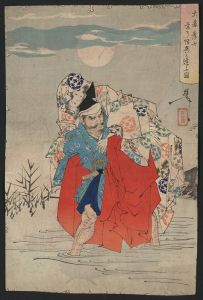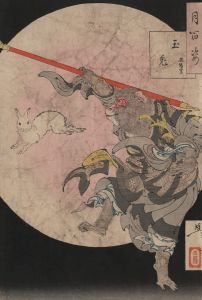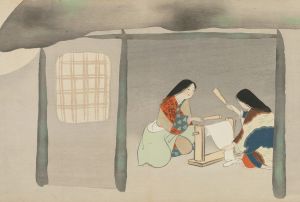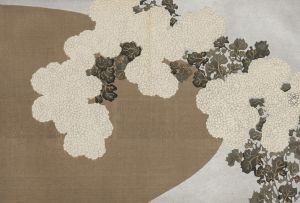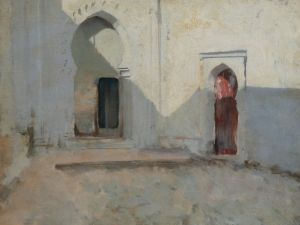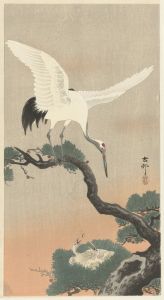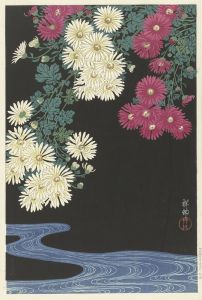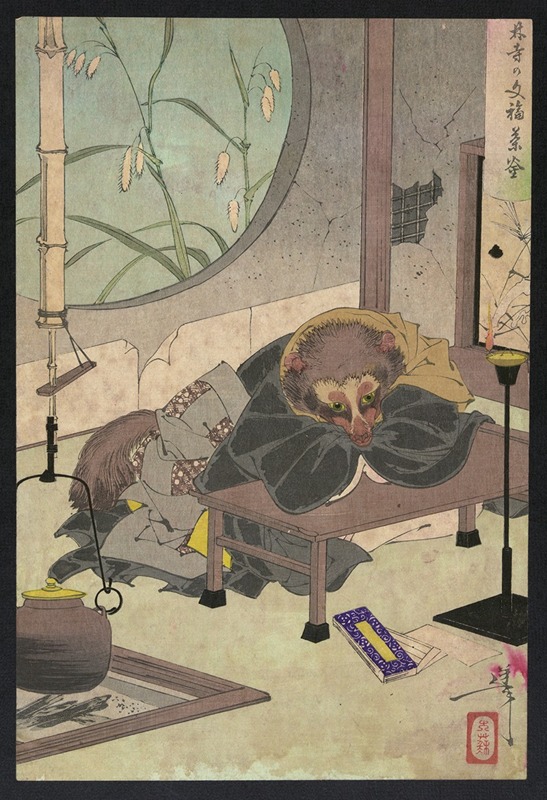
Bunbuku chagama
A hand-painted replica of Tsukioka Yoshitoshi’s masterpiece Bunbuku chagama, meticulously crafted by professional artists to capture the true essence of the original. Each piece is created with museum-quality canvas and rare mineral pigments, carefully painted by experienced artists with delicate brushstrokes and rich, layered colors to perfectly recreate the texture of the original artwork. Unlike machine-printed reproductions, this hand-painted version brings the painting to life, infused with the artist’s emotions and skill in every stroke. Whether for personal collection or home decoration, it instantly elevates the artistic atmosphere of any space.
Tsukioka Yoshitoshi was a renowned Japanese artist of the late Edo and early Meiji periods, known for his innovative and dynamic ukiyo-e woodblock prints. Among his many works, "Bunbuku Chagama" is a notable piece that reflects his unique style and the cultural narratives of his time.
"Bunbuku Chagama" is based on a popular Japanese folktale about a magical teakettle that transforms into a tanuki, a creature often depicted as a raccoon dog with shapeshifting abilities. The story is a classic example of Japanese folklore, where animals possess supernatural powers and interact with humans, often imparting moral lessons or entertaining tales.
In the tale, a poor man discovers an old teakettle, which he later finds out is enchanted. When placed over a fire, the kettle transforms into a tanuki, which can speak and perform tricks. The man decides to showcase the tanuki's abilities to earn money, and together they perform in various acts, delighting audiences and bringing prosperity to the man. Eventually, the tanuki asks to be released, and the man, grateful for the creature's help, agrees. The story ends with both the man and the tanuki living happily, having benefited from their mutual cooperation.
Yoshitoshi's depiction of "Bunbuku Chagama" captures the whimsical and fantastical elements of the story. His work is characterized by bold lines, vibrant colors, and expressive figures, which bring the tale to life. Yoshitoshi was known for his ability to blend traditional Japanese art techniques with modern influences, and this piece is no exception. His prints often explore themes of transformation and the supernatural, making "Bunbuku Chagama" a fitting subject for his artistic exploration.
The print reflects Yoshitoshi's mastery of the ukiyo-e style, which was a popular form of art during the Edo period. Ukiyo-e, meaning "pictures of the floating world," often depicted scenes from history, folklore, kabuki theater, and the pleasures of urban life. Yoshitoshi's work, however, stood out for its psychological depth and innovative compositions, which set him apart from his contemporaries.
Yoshitoshi's career spanned a period of significant change in Japan, as the country transitioned from the isolationist policies of the Edo period to the modernization efforts of the Meiji era. His art reflects this transition, combining traditional Japanese themes with new artistic techniques and perspectives. Despite facing personal and professional challenges, including financial difficulties and mental health struggles, Yoshitoshi remained a prolific artist until his death in 1892.
"Bunbuku Chagama" is an excellent example of Yoshitoshi's ability to convey complex narratives through his art. The print not only illustrates a beloved folktale but also serves as a testament to Yoshitoshi's skill in capturing the essence of Japanese culture and storytelling. His work continues to be celebrated for its artistic merit and its contribution to the preservation and dissemination of Japanese folklore.
Today, Yoshitoshi's prints, including "Bunbuku Chagama," are highly regarded by collectors and art historians. They offer insight into the cultural and artistic landscape of 19th-century Japan and continue to inspire admiration for their beauty and storytelling prowess.





